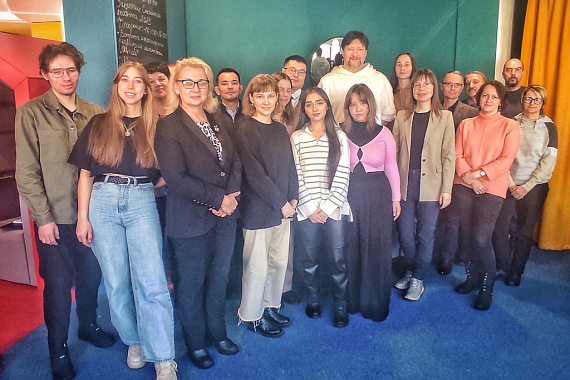MASU shapes the future of the Arctic architecture
Experts of Murmansk Arctic State University discussed the projects and ideas for the development of modern architecture and design in Arctic cities.
Tatiana Ashutova, MASU Vice-rector for Educational Affairs, and Zoya Zhelnina, Associate Professor of Tourism and Consumer Services Department, visited Salekhard to join the 'Future of Arctic Architecture' seminar. There, MASU representatives shared the best practices for architectural design in the Arctic and proposed ideas for Salekhard urban development.
The seminar was held within the framework of the 'Future of the Arctic Architecture and Climate Dynamics' research and educational consortium, initiated by MASU and Moscow Institute of Architecture in 2020. The Consortium's goals is to preserve the architectural heritage of the Arctic region and to develop urban environment and infrastructure of the Arctic.
Tatiana Ashutova, MASU Vice-rector and Consortium's chairperson, together with Aleksandr Panfilov, chief architect of Salekhard, opened the seminar with a welcoming speech.
'The number of the Consortium's members has almost doubled since the day of its establishment. Thirteen large organizations have teamed up to carry a qualitative research and come up with proposals for the Russian Arctic's development. Alongside with teachers and industry experts, we have invited students studying architecture to discuss the ideas for Salekhard development in a form of interdisciplinary interaction. We want to expand the cooperation with other universities through the Consortium,' said Tatiana Ashutova.
In addition, Zoya Zhelnina and Tatiana Ashutova presented a report on the mutual influence of the creative urban environment and tourism in the context of the Arctic territories.
‘It's no secret that creative industries directly influence the tourism development. They meet the customers' requirements for leisure and recreation services, and in the tourism business, they bring competitiveness to create and promote a unique tourist product. In general, creative industries shape a comfortable environment and new hot spots: art objects, new attractions, etc.,' commented MASU representatives.
In addition, Tatiana Ashutova and Zoya Zhelnina joined the practical part of the seminar: they discussed the Arctic architecture's features and urban development related to the climate and environment conditions of the Arctic. Students showed the experts the spaces they used for graduation work's design project. MASU representatives also evaluated the project proposed by university students-members of the Consortium to develop residential and public infrastructure of Salekhard.
According to Tatiana, the event and its key takeaways reflected in a special issue of the 'Technical Aesthetics and Research in Design' journal was another result of academic and practical cooperation of the Consortium's members, including Russia's leading universities located both inside and outside the Arctic zone of the Russian Federation.
'The Consortium focuses its work on several areas: thematic research and education, urban environment design, organization of events on the Arctic's development. That is why its work involves interdisciplinary interaction of experts and students within a common theme, that is the Arctic, as each member of our community has unique skills and knowledge,' added Tatiana.
As for the Consortium's future work, Murmansk Arctic State University and Arctic State Institute of Culture and Arts in Yakutsk plan to open a joint Master's degree program in urbanism and design of the Arctic's architecture. The Consortium member universities regularly make proposals for special standards to form a comfortable urban environment in the Arctic.
Apart from Murmansk Arctic State University, the seminar gathered representatives of Synergy University, St Petersburg State University of Architecture and Civil Engineering, the Ural State University of Architecture and Art, Moscow Institute of Architecture, Arctic Design School, Pushkin Leningrad State University, as well as members of Construction and Housing Department and Tourism and Youth Department the Yamalo-Nenets Autonomous Area.

